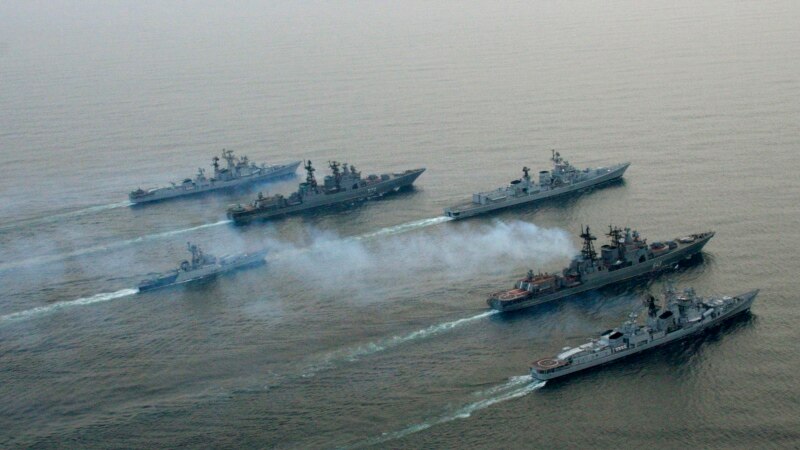
Russia docked warships in Bangladesh for the first time in five decades earlier this month and held its first joint naval exercises with Myanmar as Moscow eyes a greater role in the Indian Ocean region and looks to bolster ties with smaller countries in Asia.
Analysts say India is not averse to Russia, its old ally and largest supplier of defense equipment, stepping up its presence in its maritime neighborhood despite New Delhi’s deepening partnership with the United States, Japan and Australia to counter China’s expanding footprint in the strategic waters.
Ignoring pressure from its Western partners, New Delhi has maintained its decades-long relationship with Moscow and taken a neutral stand on the war in Ukraine.
“India has been keen for Russia to play a more active role in the Indo-Pacific because it suits New Delhi’s larger strategic goal of what it calls a multipolar global order. New Delhi believes a multipolar Asia is key to building a multipolar world,” Praveen Donthi, Senior Analyst, India, at the International Crisis Group, told VOA. “So far it has shown skill in navigating such strategic dilemmas, for instance on the Ukraine war.”
Russia’s Defense Ministry called the naval drills held with Myanmar in the Andaman Sea from November 7 to 9 “the first Russian-Myanmar naval exercise in modern history.” Two anti-submarine ships, Admiral Tributs and Admiral Panteleyev of the Russian Pacific Fleet, participated in the exercises with a frigate and a corvette from Myanmar’s navy.
Days after the Myanmar drills, the same Russian warships docked at Bangladesh’s Chittagong Port in the Bay of Bengal – the first such visit in 50 years. The Russian embassy in Dhaka called it a “huge milestone for Russia-Bangladesh relations.”
Russia also conducted two-day naval drills with India in the Bay of Bengal last week to “strengthen naval cooperation,” according to Russia’s Defense Ministry.
“While it may seem odd for India to welcome the presence of foreign militaries in nearby waters, India won’t view Russian naval power with the same concern it would that of China,” said Michael Kugelman, Director, South Asia Institute at The Wilson Center in Washington. “India likely views this Russian presence as something that can balance out Chinese naval power in the region, making the latter less of a threat to New Delhi.”
Analysts point out that China’s growing influence in the Indian Ocean in countries like Sri Lanka and Myanmar over the last decade has emerged as a major strategic headache for New Delhi, which has been engaged in a bitter military standoff with Beijing along their Himalayan border since 2020. In Sri Lanka for example, where Beijing has built the Hambantota port close to India, two Chinese research vessels that India sees as “spy ships” have docked since August last year.
Since the military junta in Myanmar seized power in 2021, Moscow’s cooperation with it has been growing and Russia is now the second largest supplier of arms to Myanmar. The country is also a key market for other Russian exports.
Russia and Dhaka have traditionally had close ties and as Bangladesh’s government comes under pressure from the United States over its human rights record, it could draw closer to Moscow. Russia is building the country’s first nuclear power plant.
“Russia is trying to demonstrate to the West that even if you try to isolate us, we have our supporters in the Global South and in Asia or Africa, we are not seen as pariahs or a country to be shunned. So that is the diplomatic message that they are giving,” pointed out Sankalp Gurjar, Assistant Professor in Geopolitics and International Relations at the Manipal Academy of Higher Education.
Analysts say the appearance of Russian warships in the Indian Ocean is also motivated by its goal to be present in all “major theaters” of the world.
“The Indian Ocean has become the main theatre for the great power rivalry between the US and China. And Moscow would like to enhance its strategic presence in the region by deepening its ties with nations in the region such as Myanmar and play a consequential role,” according to Donthi.
Other analysts agree. “It’s important for Russia to show its continued capacity to project power, especially far from home. Doing so in the Indian Ocean region, where its partner China has also been increasingly present, is an added advantage for Moscow,” Kugelman said.
However, Russia’s foray into the Indian Ocean also poses a strategic dilemma for India as Moscow has been moving close to India’s bitter rival, China, since its invasion of Ukraine. That is why New Delhi will watch carefully to see what role Moscow wants to play in the Indian Ocean, which it has long viewed as its sphere of influence.
“So far, it seems Moscow simply wants to mark its presence in the eastern part of the Indian Ocean,” according to Gurjar. “However, concern arises from the fact that China’s and Russia’s naval collaboration has been deepening. In the Western Pacific for example, both countries have been holding joint exercises and both have been assertive in their posture. If that kind of collaboration gets extended to the Indian Ocean, that would present a challenge for India,” he said.
